Key employee productivity statistics for 2026
- Global productivity grew just 0.4% in 2024, according to the OECD. That’s a small improvement, but still much slower than before the pandemic.
- U.S. productivity rose by at least 1.5% in 2024, showing a strong recovery and faster growth than many other countries.
- Only 21% of workers globally were engaged at work in 2024, which is a drop and a sign of growing “quiet quitting”.
- Gallup estimates this low engagement led to $438 billion in lost productivity in 2024, and also notes that boosting engagement could add $9–10 trillion to global GDP.
- Companies that use AI heavily report high productivity (72%) and improved job satisfaction (59%).
- About 75% of knowledge workers say AI helps them save time, focus better, and feel more creative.
- Hybrid workers, especially those working from home two days a week, were just as productive as in-office employees and were 33% less likely to quit.
Guide to employee productivity stats
The state of employee productivity
Productivity is all about how much work people get done in a certain amount of time, and it plays a big role in how well businesses and economies perform. In 2024, though, global productivity didn’t grow much. In fact, growth was still pretty slow and uneven around the world.
According to the latest data from the OECD, labour productivity across 40 countries only went up by 0.4% in 2024. That’s a slight improvement from 2023, but still much lower than before the pandemic. So, while some countries made progress, many others saw little change or even went backwards.
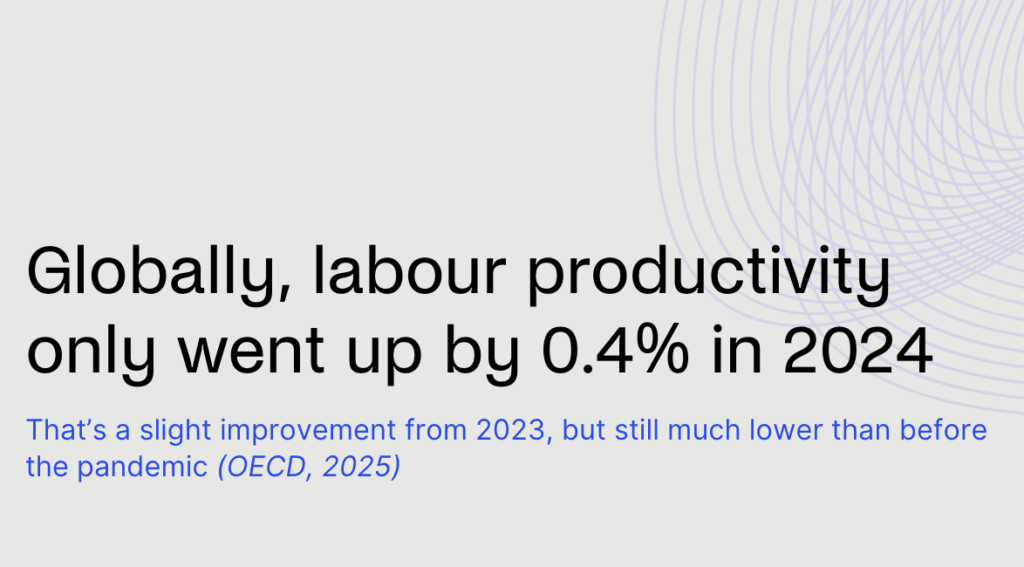
United Nations’ SDG data paint a slightly different picture. It shows that global labor productivity growth bounced back to about 1.5% in 2024, after nearly zero growth in 2022 and 2023. Still, this figure is lower than the pre-pandemic average employee productivity statistics of 1.8% for 2015–19.
Regional employee productivity trends
In Europe overall, productivity also grew by about 0.4%, but the results were very mixed. Smaller countries like Finland, Luxembourg, and Croatia saw big gains, with productivity growth above 2.5%. But large economies like Germany and Italy actually saw their productivity shrink. Looking at the longer-term trend, the euro area has only improved by 0.9% since 2019, which is far behind the 6.7% productivity growth in the U.S. over the same period. Europe’s slower recovery is linked to strict COVID lockdowns, the 2022 energy crisis, and slower adoption of digital tools in some sectors.
In North America, the average productivity growth in 2024 was just 0.2% — but that average hides a big gap. The United States saw strong gains, with labor productivity rising by 1.5% according to the OECD, and even higher (+2.3%) according to the U.S. Bureau of Labor Statistics. These gains helped make up for previous dips during the pandemic. In contrast, Canada saw a slight decline in productivity, and Mexico fell even more, which pulled the overall regional average employee productivity statistics down.
So why is the U.S. doing better? A few reasons stand out. U.S. businesses have been quicker to adopt new technologies, including AI. Their labor market is more flexible, and many companies made smart changes during the pandemic to improve how they work. In fact, productivity went up in 48 out of 50 U.S. states in 2024, which shows how widespread the gains have been.
Asia’s productivity grew only by about 0.2% in 2024, according to the OECD. Countries like Korea and Israel made modest progress, but Japan slipped slightly into negative growth. While Asia is home to some of the world’s fastest-growing economies, this year’s data shows that there’s still work to be done, especially in adopting digital tools and improving work processes in more traditional industries.
Interestingly, South America saw the strongest productivity growth of any region in 2024, with an average of about 1.2%. Most of that came from Chile, which had a particularly good year. However, the OECD warns that there’s still a lot of uncertainty in the data from this region, so we should interpret these numbers with some caution.
Employee productivity by industry
Some industries are getting more work done than ever, while others are still finding it tough to improve:
Tech and IT are leading the pack
The technology and IT sector is growing fast when it comes to productivity. Thanks to tools like generative AI, companies are finding new ways to work faster and smarter.
For example, an EY survey in India’s IT industry found that AI tools could boost productivity by up to 45% over the next five years, especially in software development and consulting. In fact, productivity in software development alone could go up by 60%.
Globally, sectors that use AI the most are seeing the biggest benefits. A 2024 PwC report found that productivity in AI-heavy industries is nearly five times higher than in those that haven’t adopted it yet. These industries are also offering higher wages and growing faster.
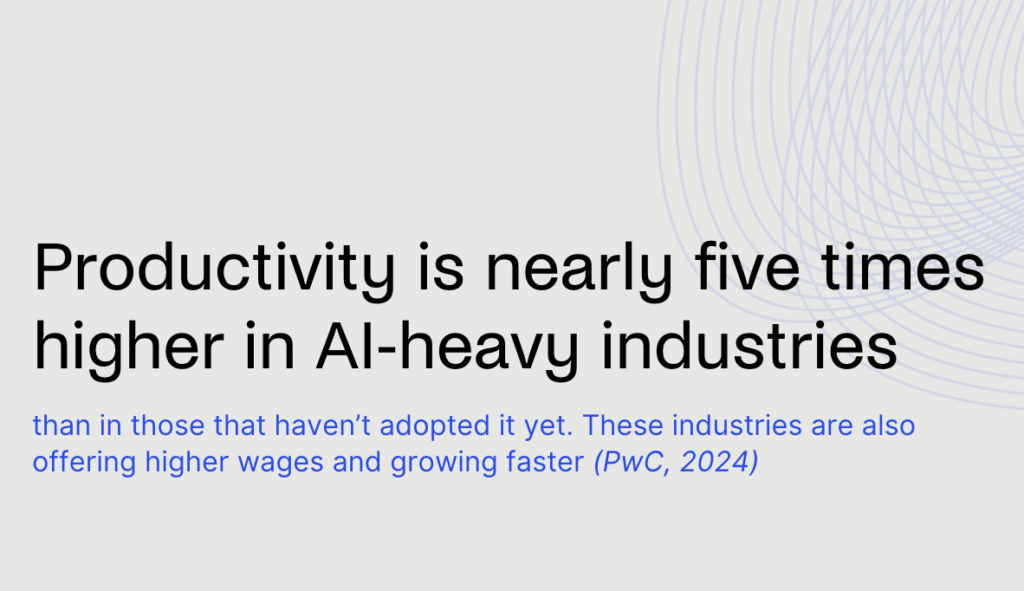
Manufacturing is struggling, but there’s hope
Manufacturing hasn’t had a great year. In the U.S., 52 out of 86 manufacturing industries saw productivity drop in 2024. In most cases, factories were producing less while employees were working more hours, which is not a good sign.
But there’s still room for improvement. According to Goldman Sachs, the future of manufacturing depends on using AI, robots, and smart machines — not things like tariffs or trade restrictions. For example, Industrial AI is already transforming traditional sectors like manufacturing and logistics, where predictive maintenance, quality control, and supply chain optimization can directly boost output per hour worked.
Healthcare and education are harder to automate
Some jobs can’t be done by machines, and that’s especially true in healthcare and education. These fields rely on people caring for others, which is hard to speed up or automate.
That said, there are small improvements here and there, too. For example, telemedicine helps doctors see more patients without long wait times, and AI tools can support diagnoses. In education, digital platforms help with homework and personalized learning. But these tools haven’t led to major productivity gains yet.
Retail, finance, and services see steady improvements
Retail and finance have been making steady progress. Many stores have moved online, where fewer staff can serve more customers. Behind the scenes, AI helps manage inventory, deliveries, and even customer support.
In finance, tools like chatbots, fraud detection, and automated forms are helping banks and insurance companies serve people faster and with fewer errors. Because these sectors mostly deal with information and data, they’ve adapted to digital tools more quickly than others.
In short, if a job can be partly done by a computer or robot, productivity is growing fast. If it can’t, then change is slower, but still possible with the right support.
So, a lot depends on how easily AI and automation can be used, but technology is not the only factor that affects employee productivity.
Factors affecting productivity around the world
The OECD’s model points to a few key factors that can help (or hurt) productivity in different parts of the world:
- Industrial production and capacity use are among the strongest drivers of productivity in advanced economies — when factories and businesses are running efficiently, output per hour goes up.
- Trade and global demand also matter, especially in smaller countries that rely on exports.
- Interestingly, labour market data (like employment levels) played a smaller role in predicting productivity, except in countries with big economic shifts.
Still, one of the biggest drivers of productivity today is workplace technology — especially AI and automation.
Statistics on employee productivity and technology
Around 78% of companies now use AI in at least one part of their business, especially in areas like IT, customer support, marketing, and content creation. And it seems to be paying off: 72% of companies that use AI heavily report high productivity, and 59% say AI makes them feel more satisfied at work.
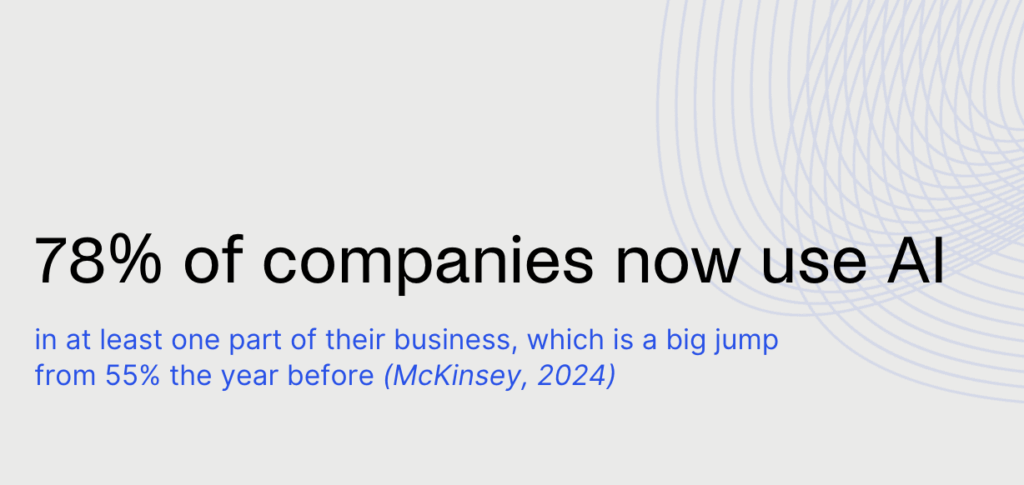
On the individual side, about 75% of knowledge workers say they’ve used generative AI and found it saves time (90%), helps them focus (85%), and boosts creativity (84%). And while managers may not always know, people are increasingly using AI in their daily tasks (even secretly, in some cases), which shows just how eager we are to work smarter.
What about employee engagement and motivation?
When we talk about productivity, it’s easy to focus on tools, systems, or policies. But one of the biggest factors is actually how people feel at work.
Here’s the worrying part: employee engagement is on the decline worldwide. According to Gallup’s 2024 report, only 21% of employees around the world say they’re truly engaged at work. That’s the first drop in years and a red flag for companies that are already struggling with low productivity.
Low engagement often leads to what’s been called “quiet quitting” — when people show up, but only do the bare minimum. They’re not actively causing problems, but they’re not bringing their best either.
This shows us that it’s not enough for businesses to just track hours or output per person. The real difference comes from how connected and valued people feel. When employees are supported, challenged in the right way, and given opportunities to grow, they usually give more back.
If we improve workplace culture, the payoff could be huge. Gallup estimates that if all employees were engaged and performing at their best, we could add $9 to $10 trillion to global GDP. That’s about a 9% boost, just from helping people feel more motivated at work.
Workplace flexibility and remote work help, too
In many countries, remote and hybrid work is helping people be more productive — especially when they have the freedom to work when and where they’re most focused.
When you ask employees themselves, most say that their current flexible setup works at least as well as the old “everyone in the office” model. Owl Labs’ 2025 State of Hybrid Work report shows that people are very clear about which tasks they do best in which place. Workers tend to pick home or “third spaces” like coworking hubs for deep focus, independent work, and creative thinking, and they still see the office as useful for collaboration, team meetings, and relationship building.
Other surveys see the same pattern in simple terms. A summary of flexible work research notes that around 90% of hybrid employees say they are just as productive or more productive in their current setup than they were in a traditional office-only pattern.
In other words, most people do not experience hybrid or remote work as a productivity drop. They experience it as a chance to match the task to the right environment.
Still, some companies worry about “productivity paranoia,” fearing remote workers aren’t doing enough, even when the remote work stats and hybrid workplace research show otherwise. But, entering 2026, managers are not as skeptical as the headlines suggest.
In Owl Labs’ 2025 report, about 69–70% of managers say that hybrid or remote work has made their teams more productive, not less.
At the organizational level, the CIPD’s 2025 UK survey tells a similar story. When employers were asked what more home and hybrid work had done to productivity and efficiency:
- Around 41% said productivity had improved.
- Around 16% said it had gone down.
- About 43% said it had made little difference either way.
So the net effect is clearly positive, but not magical. Flexible work is not a guaranteed boost, and it is not automatically a problem either. For many organizations, it slightly improves productivity or leaves it unchanged, as long as the model is designed with some care.
Most remote and hybrid workers are still getting the job done. But success depends on a few key things: clear goals, good communication, and the right hybrid work tools. If those are in place, working from home (or part-time at home) can be just as effective as being in the office… If not more.
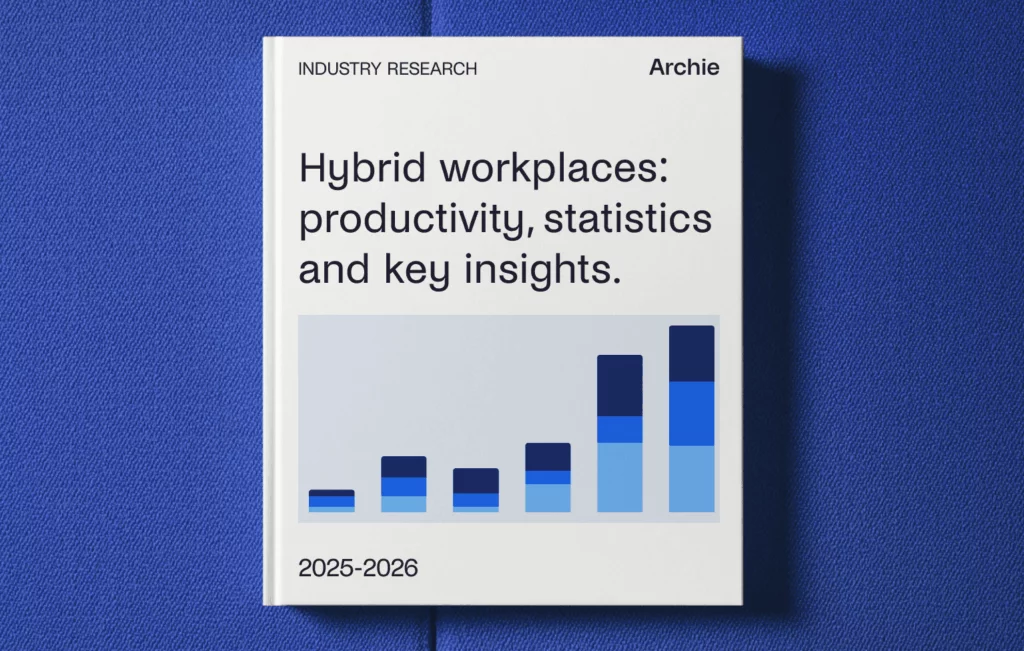
How demographics affect employee productivity
Apart from the factors above, age, education, skill level, and even where people live can all affect how productive a country or company is:
Age and the workforce sweet spot
Not all age groups contribute to productivity in the same way. Research shows that people in their 40s tend to be the most productive, especially those aged 40 to 49. They’ve got enough experience to be efficient and confident, but still have lots of energy.
But here’s the problem: in many countries, populations are aging. That means fewer people in this “sweet spot” age group, and more in the older or younger ranges, where productivity tends to be lower. As a result, overall productivity growth is slowing down in many places.
Generation gaps between employees and managers
Different generations often have different ways of working — and this can affect team dynamics and employee productivity, too. A study from the London School of Economics found that Gen Z and millennial workers tend to be less productive when their boss is more than 12 years older.
In the U.S. and U.K., about 37% of Gen Z and 30% of millennials said they felt unproductive, compared to just 14% of baby boomers. Bridging this generation gap (for example, through better communication or mentoring) can help teams work more smoothly and get more done.
Skills, education, and brainpower
Having the right skills makes a big difference. Countries and companies that invest in education, training, and early learning tend to be more productive over time.
For example, one study showed that improving working memory in children led to better academic performance, which is a strong predictor of how productive they’ll be later in life. In other words, the foundations of productivity start young.
It also shows why adult training and upskilling programs are essential, especially as jobs change quickly due to tech and automation.
What are the most common causes of low productivity?
- Low employee engagement. Only 21% of workers worldwide say they’re engaged at work. According to Gallup, this lack of motivation cost the global economy $438 billion in lost productivity in 2024.
- Poor management or leadership. Unclear goals, micromanagement, or lack of support can slow down teams and reduce motivation.
- Lack of skills, training, or support. PwC research shows that only 50% of employees feel properly trained on workplace tech. Nearly half say their digital skills aren’t fully recognized.
- Too many distractions or meetings. Constant interruptions and back-to-back meetings hurt focus and limit deep work. The average employee now spends about 11.3 hours a week in meetings, and not all of them are considered productive.
- Burnout and stress. Many workers report feeling mentally exhausted, even if their workload isn’t heavy — stress and lack of recovery time lead to slower performance and more mistakes.
- Demographic shifts and workforce gaps. Productivity peaks for people in their 40s, but aging populations mean fewer people in that range. Generation gaps between managers and younger employees can hurt team dynamics.
The good news? Most of these are fixable. With better communication, supportive leadership, smart use of technology, and a healthy work culture, productivity can rise — and people can feel better about their work, too.
Strategies to improve employee productivity
Ultimately, helping people be more productive is about creating the right conditions for them to do their best. This includes things like keeping employees engaged, setting clear goals, offering flexibility, and using helpful technology.
When people feel connected to their work and appreciated by their team, they tend to work harder and stay longer. It also helps when everyone knows what they’re working toward. Clear goals reduce confusion and help people stay focused.
Finally, the workspace itself makes a big difference. Comfortable, quiet, and well-organized environments help people concentrate and feel more in control of their day. This is especially true in hybrid and flexible offices, where people are constantly moving between home and the workplace. Tools like Archie can make this experience much smoother and more productive for everyone.

Archie helps by letting employees easily book desks, meeting rooms, or focus spaces ahead of time, so they don’t waste time hunting for a spot when they arrive. It also lets teams see who’s coming into the office and when, which makes it easier to plan in-person meetings or collaboration days.
For office managers, on the other hand, Archie provides a clear view of how the space is being used, including which areas are busy, which are underused, and where improvements could be made.
Archie also simplifies things like visitor check-ins, access control, and team scheduling, which removes a lot of everyday friction and distractions. The result is a workplace that feels easy to navigate and work in — and that gives people more time and headspace to focus on what matters.
Bonus: Employee productivity checklist
Use this list to spot areas where your workplace can improve:
People & culture
☐ Are employees engaged and motivated?
☐ Do you regularly recognize and appreciate good work?
☐ Do employees feel connected to the purpose of their work?
Goals & clarity
☐ Are goals and priorities clearly communicated?
☐ Does everyone know what’s expected of them?
☐ Are tasks broken down into manageable steps?
Flexibility
☐ Can employees choose when and where they work (if possible)?
☐ Is hybrid or remote work supported with the right tools?
☐ Are flexible work options helping reduce stress and burnout?
Tools & technology
☐ Are your digital tools easy to use and up to date?
☐ Is tech helping reduce repetitive tasks and distractions?
☐ Do employees have everything they need to work efficiently?
Learning & development
☐ Are there training programs or learning resources available?
☐ Do employees have opportunities to grow their skills?
☐ Is there support for career development?
Well-being
☐ Are employees encouraged to take breaks and time off?
☐ Is mental health supported in the workplace?
☐ Is work-life balance respected?
Communication & teamwork
☐ Is communication clear across teams and departments?
☐ Do employees have tools to collaborate easily?
☐ Are team meetings productive and focused?
Work environment
☐ Is the office comfortable and supportive of focused work?
☐ Can employees easily book desks or rooms (if needed)?
☐ Is the space clean, quiet, and organized?
A summary of the most recent employee productivity statistics
🌍 Global and regional productivity trends
- +0.4% productivity growth across 40 OECD countries in 2024 (OECD).
- +1.5% global productivity growth in 2024 (UN SDG data).
- Pre-pandemic global average (2015–2019) was 1.8% per year.
- Europe overall: +0.4% in 2024.
- Finland, Luxembourg, Croatia: over +2.5% productivity growth.
- Germany and Italy: experienced a decline in productivity.
- Euro area (2019–2024): only +0.9% growth.
- United States (2019–2024): +6.7% growth.
- North America in 2024: +0.2% average growth.
- United States in 2024:
- +1.5% (OECD)
- +2.3% (U.S. Bureau of Labor Statistics)
- Canada: slight productivity decline in 2024.
- Mexico: larger productivity drop in 2024.
- 48 out of 50 U.S. states saw productivity increase in 2024.
- Asia in 2024: +0.2% growth.
- Japan: slipped into negative productivity growth.
- South America in 2024: +1.2% average growth, mostly due to Chile.
💻 Industry-specific productivity
- 52 out of 86 U.S. manufacturing sectors saw a drop in productivity in 2024.
- +45% expected productivity boost in India’s IT sector over 5 years.
- +60% potential productivity gain in software development.
- Productivity in AI-heavy industries is nearly 5x higher than in non-AI industries.
- 78% of companies use AI in at least one part of their business.
- 72% of companies using AI heavily report high productivity.
- 59% of those companies say AI makes them more satisfied at work.
- 75% of knowledge workers say they’ve used generative AI.
- Of those AI users:
- 90% say it saves time
- 85% say it helps them focus
- 84% say it boosts creativity
🧠 Employee engagement and well-being
- Only 21% of global employees were engaged at work in 2024.
- Gallup estimates $438 billion in lost productivity globally due to low engagement.
- Boosting engagement could increase global GDP by $9–10 trillion, or about 9%.
- Employees working from home 2 days a week are just as productive and 33% less likely to quit.
👥 Demographics and skills
- People aged 40–49 are the most productive group.
- In the U.S. and U.K.:
- 37% of Gen Z feel unproductive
- 30% of millennials feel unproductive
- 14% of baby boomers feel unproductive
- Productivity is lower in countries with aging populations and higher dependency ratios.
- 50% of employees don’t feel properly trained on workplace tech.
- Nearly 50% say their digital skills aren’t recognized.
- The average employee spends 11.3 hours per week in meetings, and many aren’t productive.
Sources
- OECD, OECD Compendium of Productivity Indicators 2025
- United Nations, Sustainable Development Goals Report 2025
- European Central Bank, Why Has Labour Productivity in the Euro Area Not Rebounded More Strongly?
- U.S. Bureau of Labor Statistics, Productivity up 2.3 percent in 2024
- EY, The AIDEA of India 2025: How Much Productivity Can GenAI Unlock in India?
- PwC, AI and Productivity Report 2024
- Business Insider, Goldman Sachs on Tech, Tariffs, and the Future of Manufacturing
- Gallup, State of the Global Workplace 2024 Report
- Stanford University, Hybrid Work Is a Win-Win-Win for Companies and Workers
- McKinsey, The State of AI 2024
- Microsoft & LinkedIn, 2024 Work Trend Index Annual Report
- Bank of Canada, Staff Discussion Paper 2025-3: Demographics and Productivity
- London School of Economics & Protiviti, Global Generations Survey Report
- Financial Times, The Workforce Sweet Spot: Age and Productivity
- Owl Labs, State of Hybrid Work 2025
- CIPD, Flexible and hybrid working practices in 2025

Berenika Teter
Archie's Content Manager, fueled by filter coffee and a love for remote work. When she’s not writing about coworking spaces and hybrid workplaces, you can probably find her exploring one.
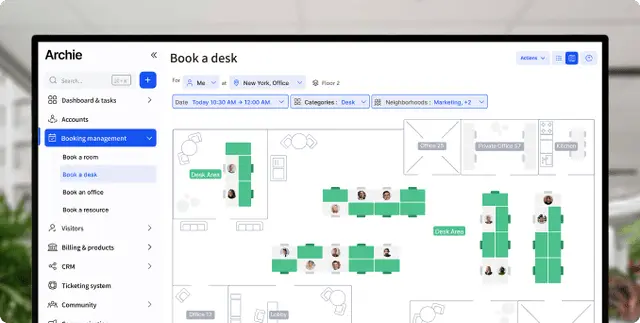




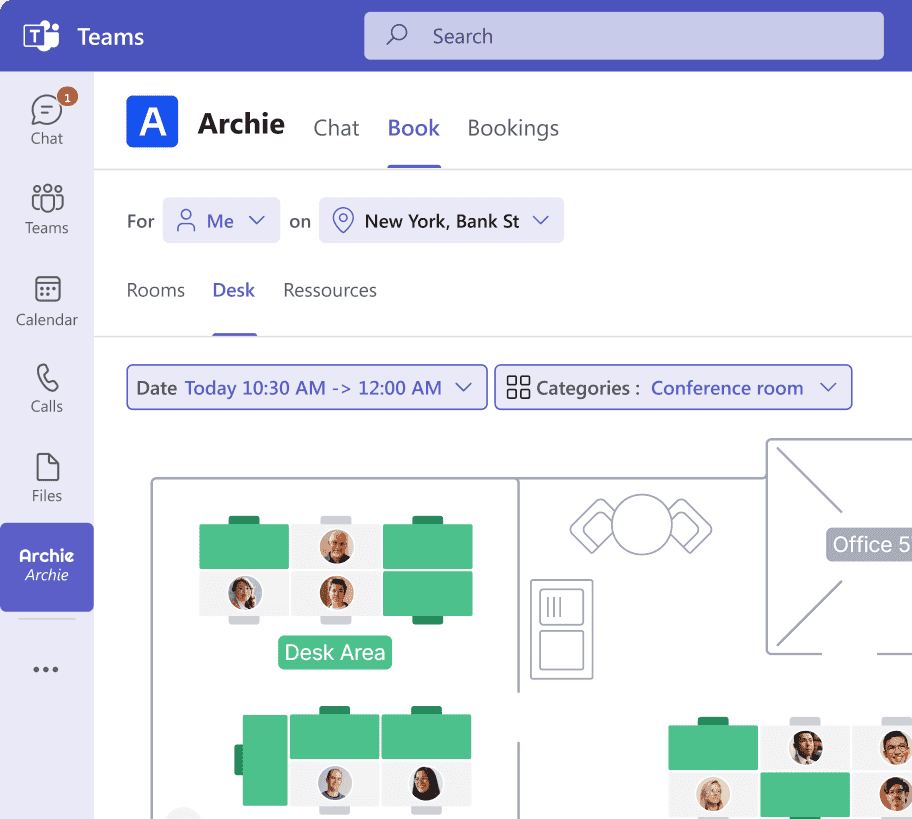

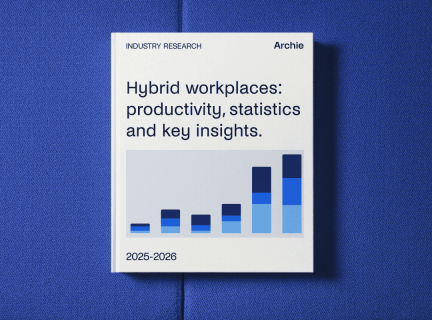
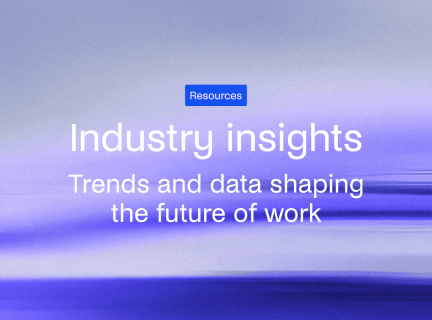
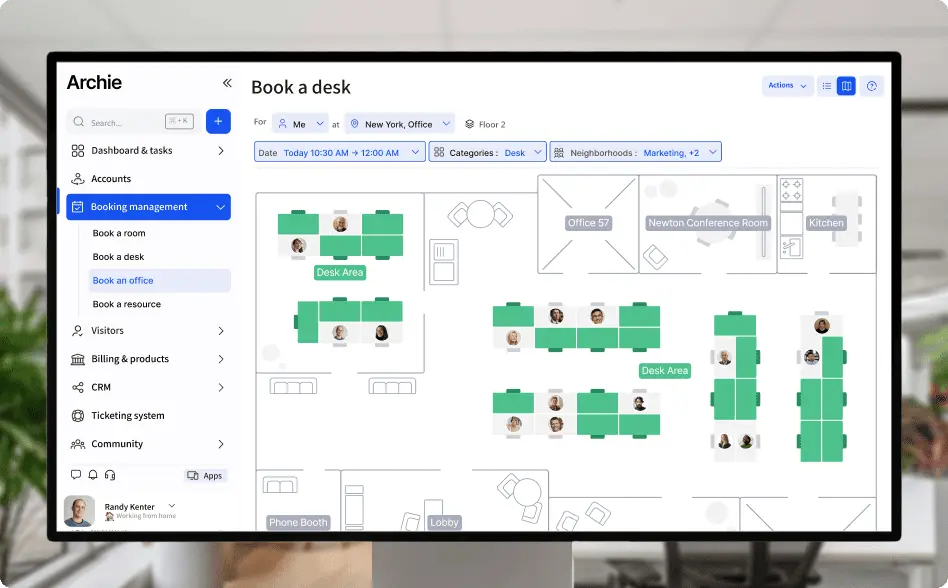





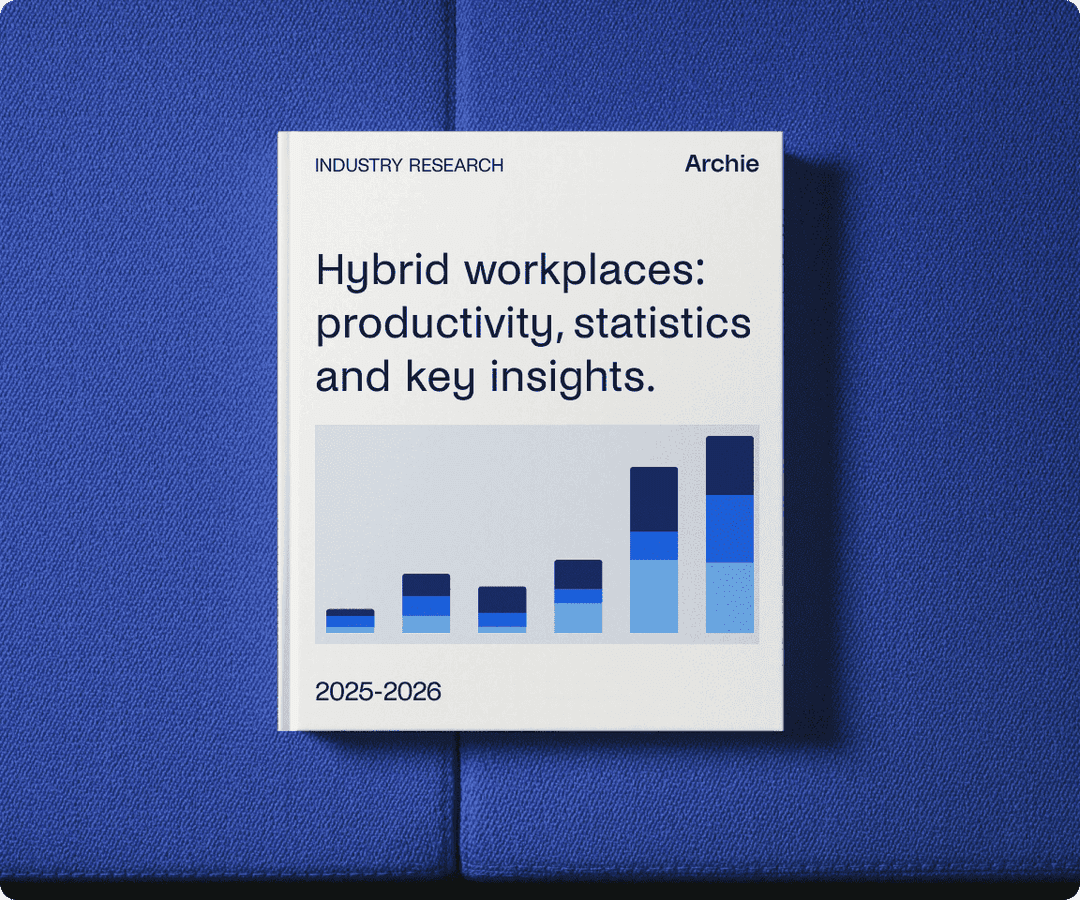
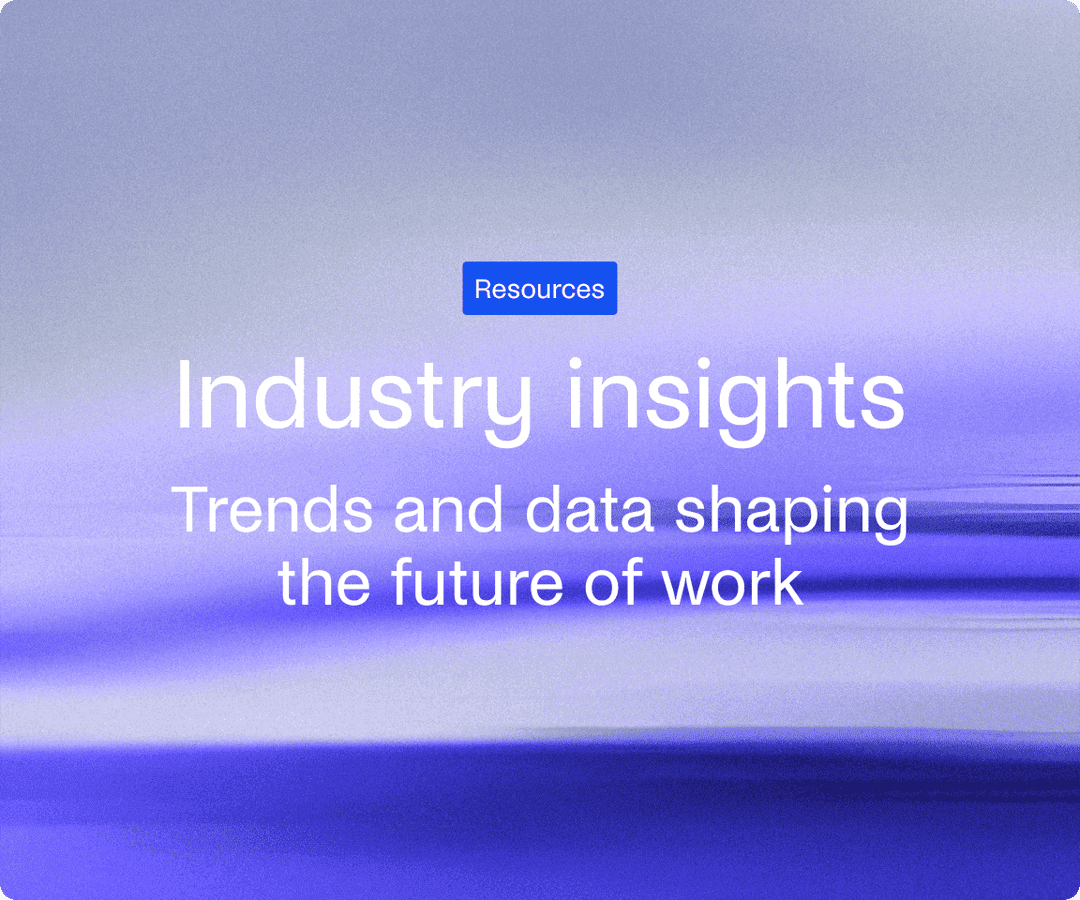
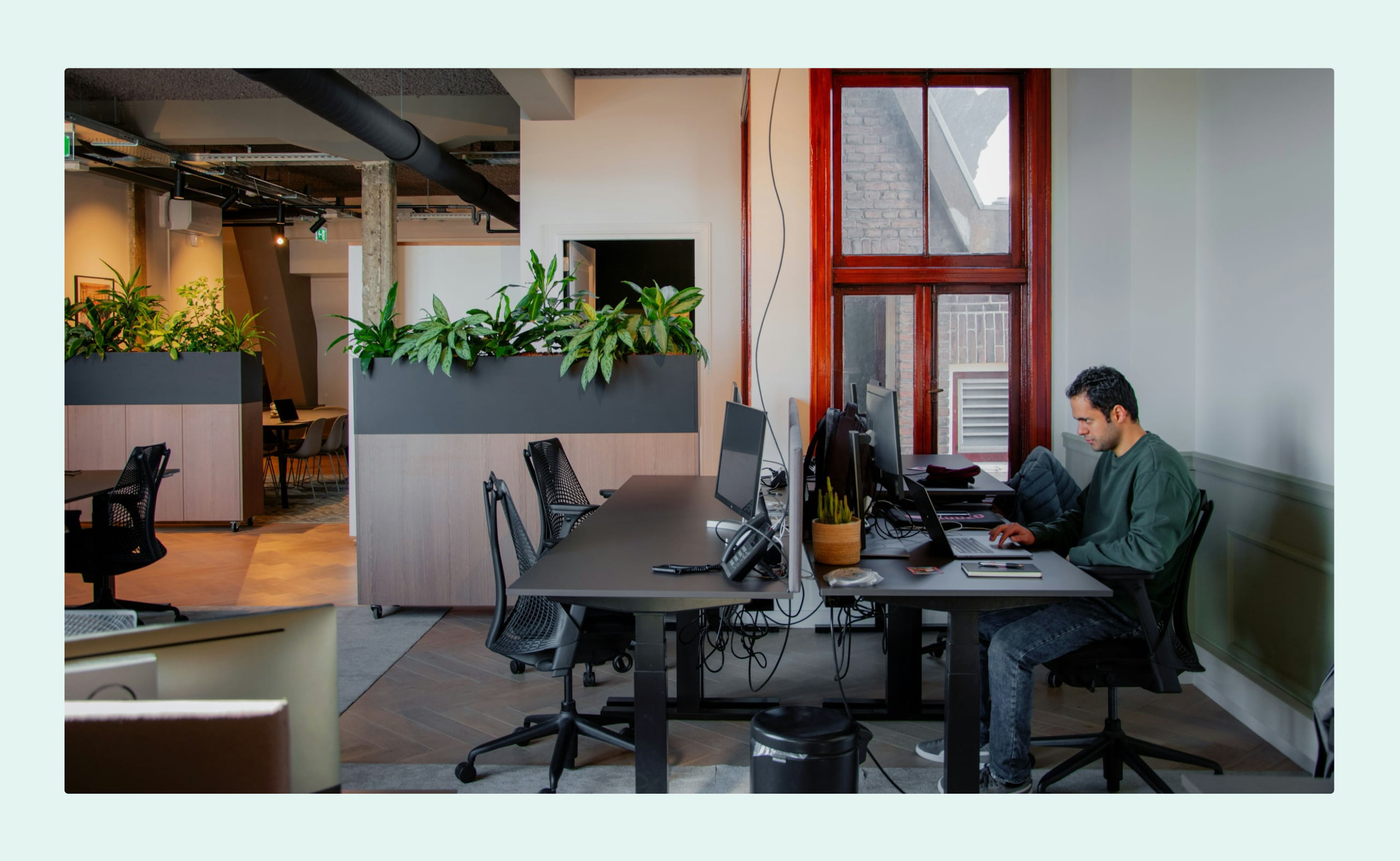
![The Latest Coworking Statistics & Industry Trends [2026] A cozy coworking space with wooden walls, warm lighting, and a large map of South America.](https://archieapp.co/blog/wp-content/uploads/2025/08/Latest-coworking-statistics-cover-image-400x400.jpg)
![RTO: Return-To-Office Statistics, Research & Trends [2026] Modern meeting room with large windows, a wooden conference table, pink chairs, and industrial-style ceiling lighting.](https://archieapp.co/blog/wp-content/uploads/2025/04/RTO-statistics-cover-image-400x400.png)
